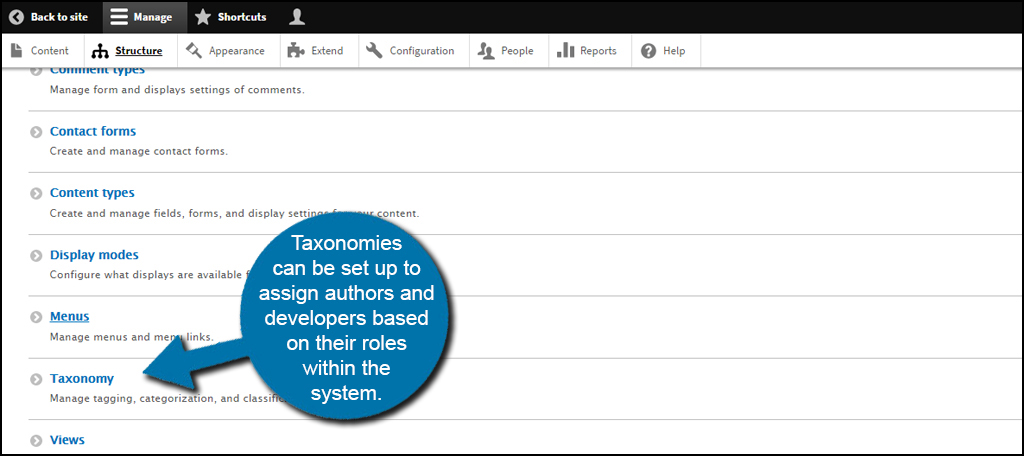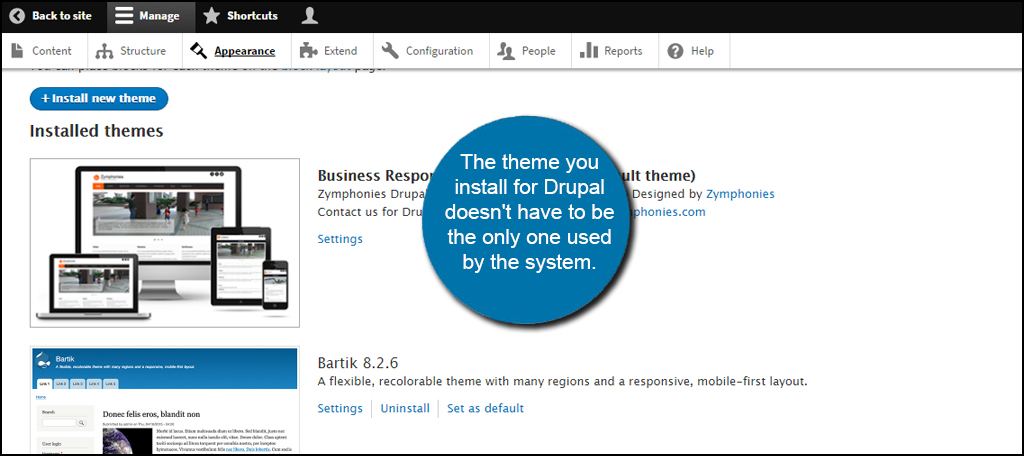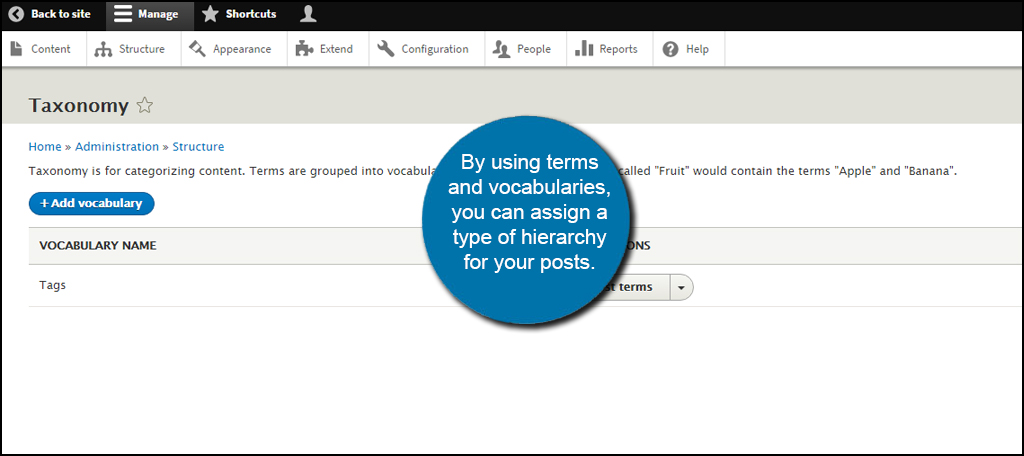A taxonomy in Drupal is a way to classify certain types of content. Depending on the type of website you build, there can be a long list of classifications and categories to organize the content you create. From writing articles to controlling the appearance of specific sections, taxonomies are used to govern these classifications.
By default, the Drupal taxonomy module is part of the installation process for the platform. As a result, you immediately have access to building these categories. Today, I’ll go over the basics of how to use this feature.
Why Do You Need Taxonomy?
In the grand scheme of Drupal, there are several ways to utilize a taxonomy. Some of these are:
- Managing workflow.
- Defining specific areas of the site to use different themes.
- Organizing content.
Managing the Workflow
Taxonomies can be set up to assign authors and developers based on their roles within the system. It can also be used to hold articles and pages for review until the editor has a chance to approve the content.

This can keep the workflow organized while making sure everyone has access to the projects they are working on. For example, new articles can start off with a vocabulary term of “In Progress” and then be changed to “For Review” once the content has been completed.
The important thing to remember in this kind of a set up is that changing the roles may result in limiting access to the original author based on his or her permissions. If the original author cannot access content in a certain taxonomy, you can’t expect them to fix any revisions or make edits themselves.
Defining Specific Areas to Show a Different Theme
The theme you install for Drupal doesn’t have to be the only one used by the system. In fact, a lot of developers will use other themes to accentuate certain types of content. A lot of this is done by setting up those specific taxonomies.

It may sound confusing to some, but it’s a good way to give the site more of a personality. For instance, let’s say that you have a website for your landscaping company. One of the categories for articles consists of maintaining swimming pools. Instead of that category using the main theme of the website, you can switch it to something relating to water for content relating to certain keywords.
Organizing the Website Content
Perhaps one of the most common ways to use the Drupal taxonomy module is by organizing the content you write. Whether it’s through the article system within Drupal or if you use the Blog module, keeping the material you write organized can have many benefits for yourself as well as your visitors.

By using terms and vocabularies, you can assign a type of hierarchy for your posts. This makes everything you write much easier to find. Here is an example:
- You have a landscaping blog on your company website.
- Your author creates a lot of articles about maintaining lawns. The vocabulary behind this section could be something like, “Lawn Maintenance.”
- Now, your author creates a few articles about maintaining swimming pools your company installs. The vocabulary for these articles could be, “Pool Care.”
- When a visitor looking for pool information comes to the website, he or she can simply click on the taxonomy for “Pool Care” and begin finding information. This means the visitor doesn’t have to sift through articles of content he or she does not need.
Adding tags is a common form of taxonomy that many websites use. Although it’s more commonly found in blogs, tags can be greatly helpful when it comes to sharing content that is related to what the visitor is looking for.
How to Use a Taxonomy
Taxonomies can have a wide range of purposes. There will need to be some planning before you can start updating a vocabulary in Drupal. Here are a few ways to get you started:
- Setting roles and permissions to edit the site:
Roles and permissions are vastly important if you have more than one person editing the website. You don’t want just anyone making changes to vital areas. For example, an author should have no control over accessing themes or adding modules. - Changing specific areas of the site to use different layouts and themes:
As I mentioned before, a taxonomy can be used to alter the look of specific areas of a site. Now, you don’t need to change the layout and appearance if you don’t want to. However, a taxonomy is needed should you plan for such changes later on. These can be used in conjunction with content terms by identifying specific topics. - Identifying shareable content on the site:
A taxonomy can direct users to find documents and content that is shared on the website. For example, providing forms and sheets for download can be guided with the right words or phrases such as using a vocabulary like “Downloads.” - Setting other physical locations of businesses:
Some websites are used to govern over several physical locations of one business. A taxonomy can be developed to include state, city or even country locales. This is helpful when differentiating specific local information such as blogs and community events. As every location will be different, each will have its own section of the primary website.
Good website hosting is only part of developing a great website. Understanding Drupal can make the experience even greater by taking advantage of what the system has to offer.
These are only some of the most common ways a taxonomy can be used. In reality, it centers around the needs of the website and what kind of business plan you have in place for online activity. Spend a few moments and develop a hierarchy within your website for the different areas you may need. It may save you a great deal of time in the long run.
The post How To Use Taxonomy in Drupal appeared first on GreenGeeks.
